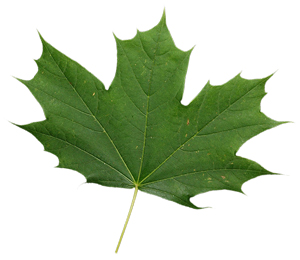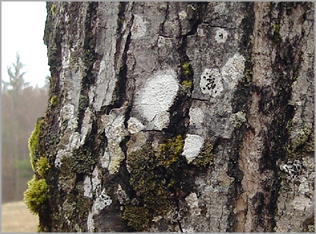The Science
Maple Watch is already regularly monitoring sugar maples, Acer saccharum, on 12 sugarbushes New Hampshire examining sap, buds, and leaves for signs of stress. At least two schools are piloting the Maple Watch program in 2011.
The project addresses recent projections by the U.S. Forest Service that climate change, especially warming temperatures, over the next century may extirpate most of the sugar maples in the United States. The maple’s response to stresses triggered by or intensified by climate change may illuminate how the maple functions and the physiological consequences of climate change to a dominant species in the northeastern forest.
 |
|---|
| Acer saccharum |
This study involves five components:
• Historical records and climate change measures
• Anatomical measures of maple health
• Spectral measures and remote sensing
• Chemical measures of maple health
• Outreach partnership with citizen scientists
This study builds on a Masters of Science thesis which evaluated the potential of spectral indices of foliar reflectance, anatomical measures of specific leaf area, leaf retention, and bud quality, and historic trends in sap sugar for detecting stress in sugar maple. Thirty trees were examined in ten plots on five sugar bushes in or near the Bearcamp Valley, New Hampshire, over the course of the 2008 growing season.
The study found water stress in 100% of trees; reduced chlorophyll content in 60%; early abscission of leaves in 80%; reduced growing season in 70%; and poor fall foliage color in 80%. Drought in early summer and unusually heavy rain in mid-summer were likely stressors. Despite stress, 73% of the trees produced high quality buds. Differences in stand management, site conditions, and prior stresses appear to account for most differences in response to stress. The commonalities among the trees may indicate a single common stressor such as acid deposition or climate change.
Maple Watch continued in 2009 and 2010 as we perfected our protocols.
In May 2010, an atmospheric pollutant defoliated sugar maples in Campton, NH. We now believe this was peroxyacetyl nitrate, an oxidant formed from the combination of nitrogen gases released by forest fires in Canada, high temperatures that day in Campton, and clear sunny skies.
 |
|
| Lichens, Conotrema urceolata, live happily with sugar maples. |
This spring sugar producers will collect sap for chemical analysis at UNH. Chemists are looking at phenolic compounds which trees produce to heal wounds, ward off insects and fungi, and halt and repair stress damage. These new experiments in chemistry may open the door to new educational programs in chemistry through Forest Watch.
More information:
Sugar Maple Materials for Schools...
Outreach/Inreach...
